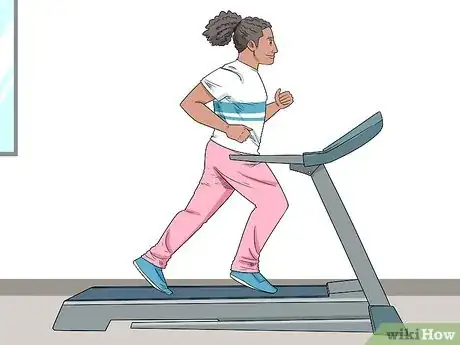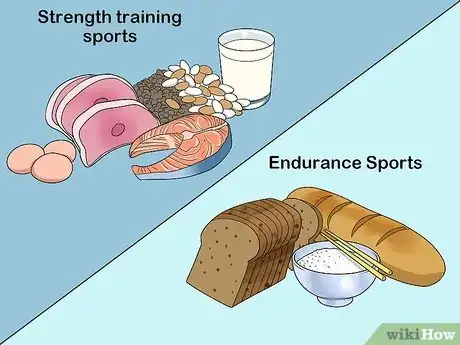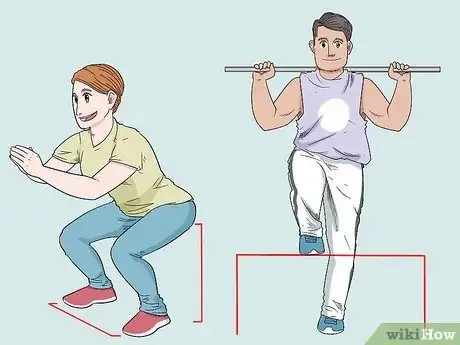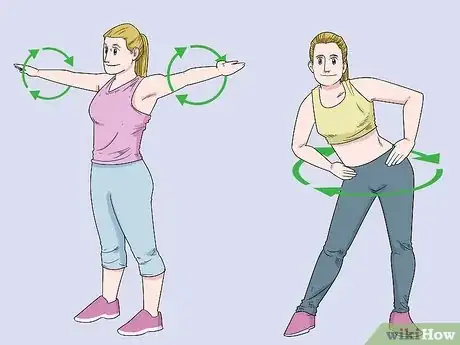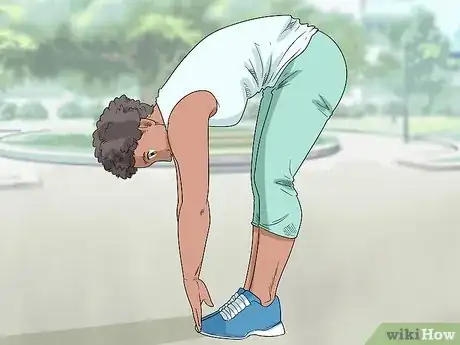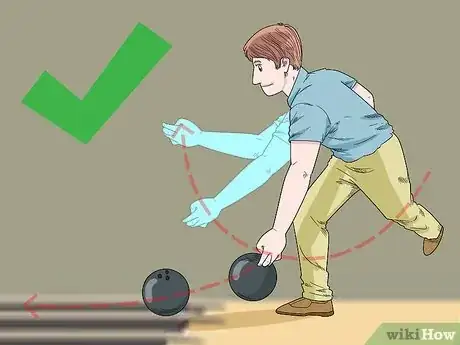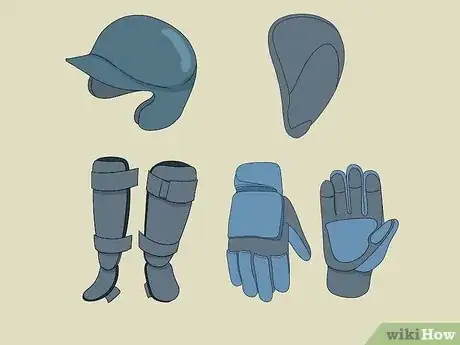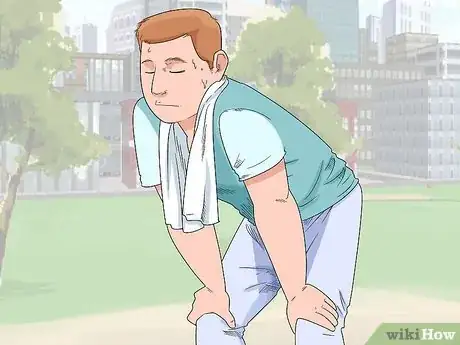This article was co-authored by Kent Bry. Kent Bry is a certified ski and snowboarding instructor and the director of Adventure Ski & Snowboard, a school based in the San Diego, California metro area. With over 50 years of skiing and snowboarding performance and instruction experience, Kent is certified by the Professional Ski Instructors of America (PSIA). Adventure Ski & Snowboard is a member of the PSIA and the American Association of Snowboard Instructors (AASI). Kent holds a BS in Recreational Therapy from San Diego State University and is also a California-registered recreational therapist.
There are 13 references cited in this article, which can be found at the bottom of the page.
This article has been viewed 25,179 times.
Sports and physical activities are meant to be fun, but if you aren't careful you can risk serious injury. While it is not possible to prevent all injuries, there are lots of practical steps you can take to greatly decrease your chances of becoming injured while playing your sport. Start by being mindful about your body's needs and following the guidelines of your sport.
Steps
Preparing Your Body for Your Sport
-
1Get in shape. Injury is much more likely if you push your body beyond its fitness level. In order to decrease your chances of injuring yourself while playing a sport, start a regular exercise regimen and get in good shape before the season begins.[1]
- Use conditioning exercises to help you strengthen the muscles you will use the most for your sport.
- Getting a physical before the season starts is a good idea because your doctor can let you know if you are fit enough to play your sport.[2]
-
2Warm Up. You should never start playing your sport without warming up first. Warm-up exercises will increase blood flow to your muscles and help increase your flexibility, which makes injuries less likely.[3]
- Walking briskly or jogging for five to 10 minutes is a great way to warm up.
-
3Cool down. Cooling down after your workout is just as important as warming up before. This allows your heart rate to return to normal and prevents the muscles from becoming too stiff.[4]
- You can cool down the same way you warm up. Walking or jogging for a few minutes is very effective.
-
4Give your body a break. Practicing the same sport every day can greatly increase your risk of overuse injuries, which are caused by repetitive stress to a specific part of the the body. To avoid these kinds of injuries, take some time away from your sport periodically.[5]
- If you are practicing your sport regularly, take at least one day off each week to give your body a chance to recuperate.
- If you practice your sport year-round, take at least one month off each year.
- Practicing different sports that challenge different muscle groups can help prevent overuse injuries.[6]
-
5Avoid dehydration and heat stroke. Heat-related injuries are an often overlooked risk of playing sports, but they are easy to prevent. Be sure to stay as cool as possible and drink plenty of fluids before, during, and after the game.[7]
- If you are playing outside in the warm weather, wear a hat to protect yourself from the sun.
- Symptoms of heatstroke include dizziness, fatigue, headache, confusion, nausea, paleness, weakness, weak pulse, and heavy sweating. If you experience any of these, stop playing the sport immediately, move to a cool area, and drink water. You may need medical attention if your symptoms do not go away after a few minutes.
-
6Maintain adequate nutrition that meets the demands of your sport. When participating in sports, depending on the type of sport, there may be increased demands put on the body when it comes to nutrition. For example, strength training sports may require more protein intake, while endurance sports may require more carbohydrates. It’s best to talk to a nutritionist or dietitian to assess the right recommended nutritional requirements to maintain proper intensity in your sport.
-
7Screen for proper movement patterns. Each sport requires that your body move with the right patterns — some sports require you to quickly change direction, others might require you to swing a bat. If certain muscles are not being activated, or are tight, this can lead to stresses in other areas, like the joints. Over time, there is a risk of increased injury. You may want to get a Functional Movement Screen by a certified trainer or coach to assess any limitations. Movement screens in the preseason have been shown to predict the risk of injury.[8]
- Proper movement screens assess for tightness and limitations in range of motion. The trainer may, for instance, have you perform a squat or lunge and check your form and balance for signs of tightness or limitations.
Stretching
-
1Incorporate stretching into your training. While you may be tempted to focus all of your energy on building your strength and endurance, it's important to focus on flexibility as well. Incorporating stretches into your regular exercise routine will help protect you from injury.[9]
- Stretching can also help you improve your range of motion, which can make you a better athlete, so it has multiple benefits.
- When deciding what stretches you should do, think about the injuries that are most common for people who play your sport, and focus your stretches on those muscle groups.
- Also consider which muscles are tight on your body. Tight muscles are more susceptible to injury, so work on increasing their flexibility.[10]
- No matter what sport you play, be sure to stretch the major muscle groups, which include the calves, thighs, hips, low back, neck, and shoulders.
- If stretching hurts, back off right away. You should never push yourself past the pain, as you are likely to cause an injury.
-
2Do dynamic stretches before you play. Do some dynamic stretches (stretches that involve movement) before your game. These will help increase your flexibility.[11]
- Arm circles and hip rotations are good examples of dynamic stretches.
- Remember not to start stretching until after you have warmed up your muscles.
- Doing a little yoga or tai chi can also help you stretch before you play, as these practices both focus on dynamic stretches.[12]
-
3Do static stretches after you play. Static stretches (stretches that involve holding a pose for several seconds) should be done after you cool down, never before your workout. These stretches help prevent your muscles from becoming too tense after your workout.[13]
- Forward bends and folds are great examples of static stretches.
- Hold each pose for up to 30 seconds for the best results.
Playing Your Sport Safely
-
1Understand and follow the rules. Each sport has a specific set of rules that are designed to protect players from injury. If you are playing on a school team or in a league, there may be additional rules. For example, some football teams permit tackling, while others do not. No matter what the rules are, be sure you understand and follow them at all times.[14]
- Rules typically prohibit dangerous maneuvers, such as headfirst sliding in baseball or checking in hockey. You risk not only getting injured if you disobey the rules, but also being penalized.
-
2Use the correct form. Injuries are much more likely to happen if you do not use the proper technique for your sport.[15] If you are unsure what the proper technique is, consult with a coach or personal trainer.[16]
- This applies to training as well as to playing sports. It is quite easy to injure yourself while working out if you have bad form.
-
3Use protective gear and equipment. Whether you are playing a sport competitively or just casually with some friends, you should always wear the proper protective gear for your sport. Each sport is different and has its own risks, so ask a coach or do research online if you are not sure what equipment you should be using.[17]
- Helmets are important for protecting your head while playing sports that involve physical contact or may cause falls, including football, hockey, skateboarding, and cycling.
- Cleats are special shoes that prevent falls when running on turf, and should be used when you are playing sports like football, soccer, and baseball.
- Some sports also require that you wear protective gear on your eyes, mouth, arms, and legs.
- Inspect all of your equipment for defects before using it.
- While pads and helmets may not be the most fashionable accessories, they are designed to protect the fragile body, so don't take any risks by not wearing them.
-
4Know when to stop. You may be committed to your sport and not want to stop until the game is over, but sometimes it's best to slow it down to prevent injuries.[18] Always listen to your body and be willing to take a break when you need to.
- Give yourself a break when you're feeling fatigued. Injuries are more likely to occur when your muscles are fatigued.[19]
- If you feel pain, stop the activity you are doing right away.[20]
- If you do sustain an injury, don't go back to playing your sport until you are fully healed. Even if you feel a lot better, you may cause more harm if you push yourself too hard before your body has had the chance to recover from the injury entirely.[21]
- It is best to stick to your comfort level and advance gradually in the sport.[22]
References
- ↑ https://www.aap.org/en-us/about-the-aap/aap-press-room/news-features-and-safety-tips/pages/sports-injury-prevention-tip-sheet.aspx
- ↑ http://www.hopkinsmedicine.org/health/articles-and-answers/prevention/10-tips-for-preventing-sports-injuries-in-kids-and-teens
- ↑ http://www.nsmi.org.uk/articles/avoid-sports-injury.html
- ↑ http://www.nsmi.org.uk/articles/avoid-sports-injury.html
- ↑ https://www.aap.org/en-us/about-the-aap/aap-press-room/news-features-and-safety-tips/pages/sports-injury-prevention-tip-sheet.aspx
- ↑ http://www.hopkinsmedicine.org/health/articles-and-answers/prevention/10-tips-for-preventing-sports-injuries-in-kids-and-teens
- ↑ http://www.niams.nih.gov/Health_Info/Sports_Injuries/child_sports_injuries.asp#prevent
- ↑ https://www.ncbi.nlm.nih.gov/pubmed/26982969
- ↑ http://www.mayoclinic.org/healthy-lifestyle/fitness/in-depth/stretching/art-20047931
- ↑ http://stretchcoach.com/articles/how-does-stretching-prevent-injury/
- ↑ http://www.webmd.com/fitness-exercise/new-ideas-on-proper-stretching-techniques?page=2
- ↑ http://www.mayoclinic.org/healthy-lifestyle/fitness/in-depth/stretching/art-20047931
- ↑ http://www.webmd.com/fitness-exercise/new-ideas-on-proper-stretching-techniques?page=2
- ↑ https://www.aap.org/en-us/about-the-aap/aap-press-room/news-features-and-safety-tips/pages/sports-injury-prevention-tip-sheet.aspx
- ↑ Kent Bry. Certified Ski & Snowboarding Instructor. Expert Interview. 14 July 2020.
- ↑ http://www.niams.nih.gov/Health_Info/Sports_Injuries/sports_injuries_ff.asp
- ↑ http://kidshealth.org/en/kids/sport-safety.html
- ↑ Kent Bry. Certified Ski & Snowboarding Instructor. Expert Interview. 14 July 2020.
- ↑ http://www.webmd.com/men/features/seven-most-common-sports-injuries
- ↑ https://www.aap.org/en-us/about-the-aap/aap-press-room/news-features-and-safety-tips/pages/sports-injury-prevention-tip-sheet.aspx
- ↑ http://kidshealth.org/en/kids/sport-safety.html#
- ↑ Kent Bry. Certified Ski & Snowboarding Instructor. Expert Interview. 14 July 2020.

